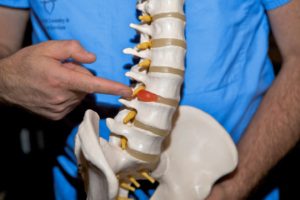If you spend time on the internet, you’ve probably seen memes about back pain and adulting. It’s just part of normal aging, right? You hit thirty and start having to pop ibuprofen more often. There’s nothing wrong with having a sense of humor about these things. But is it true that back pain is a normal part of adult life? The answer to this question is important because if back pain is ‘normal,’ you have to live with it and possibly look forward to it worsening.
Fortunately, we can debunk this myth. While you may notice that your back becomes stiffer as you age (we’re talking over fifty here), pain shouldn’t be your new normal. When your back hurts, there’s a reason, and you can address it. You can even prevent back pain.
Here’s why your back hurts and what you can do about it.
Disc Injuries
Between each vertebra in your spine sits a cushy, fluid-filled disc. They absorb shock and aid with smooth movement, but sometimes they crack under the strain. Herniated discs leak fluid that irritates surrounding tissues and nerves. If your back pain feels like a burning sensation or you have shooting pain in your extremities, a disc injury may be the culprit. Sometimes a disc doesn’t herniate but slips out of place. This is known as a bulging or slipped disc, and it can put pressure on nerves.
Disc injuries can cause intense, even debilitating, pain, but it shouldn’t be forever. Most disc injuries heal on their own with rest and home care. If your disc injury isn’t healing well, treatments like spinal decompression therapy can help. Spinal decompression therapy gently stretches the spine, creating negative pressure between vertebrae that draws in nutrients and oxygen. It can also move bulging discs back into place. Getting treatment early after your injury will reduce the risk of prolonged pain, but even those dealing with chronic pain can benefit.
While people between the ages of thirty and fifty are at the highest risk for disc injury, they can happen at any age. Most disc injuries are preventable. To avoid spending a couple of months on the couch, use best practices while lifting and keep your spine in a neutral position while mowing the lawn, shoveling snow, or doing anything else strenuous.
Discs get flatter as we age. It happens to everyone. This is what causes that stiffness after a certain age that we mentioned before. Most people don’t experience pain from this, but some people do. Scientists aren’t sure what makes the difference. Spinal decompression therapy has shown promise in helping people with this type of pain.
Weak Muscles
Your uptick in back pain may have less to do with your age than your habits. Most adults are less active than they were as kids. When was the last time you played tag? Or chased your friends with a squirt gun? These days, you sit at work and then sit at home, right?
Sitting is horrible for your back. It puts pressure on your lumbar spine (lower back) and weakens core muscles. Even the fanciest ergonomic office chair isn’t going to totally prevent back pain. To do that, you need to be active more often and include back-strengthening moves into your workout routine.
The paraspinal muscles sit along your spine. They support it and allow it to move. They can’t hold your spine in place when they get weak. That makes you more prone to disc injuries, facet joint issues, and strained muscles. Together with other core muscles, your back muscles assist with balance and coordination. People with weak cores are more likely to fumble into a back injury.
Talk to your chiropractor about safely exercising to keep your back and core muscles strong. A few simple moves done consistently are all it takes. Considering how disruptive back pain is, it’s worth some time at the gym to prevent it.

Trigger Points
Does your neck always hurt after your workday? Do you still have pain from an injury that should’ve healed years ago?
Trigger points, also called knots, are tight areas of muscle tissue. Sometimes they are caused by scar tissue. When you get injured, muscles around the injury tense. Even after the injury heals, trigger points can be left behind. Overuse injuries and bad posture (like hunching over your computer) can also cause trigger points.
Besides correcting the cause of the trigger points with posture rehab or other therapies, it’s essential to address them directly. Dry needling is a safe, effective treatment for trigger points. Your provider will use tiny needles similar to those used in acupuncture. The tiny “injury” the needle causes triggers your body to send healing cells to the area. While they are there, they will heal the trigger point. Dry needling also causes the muscle to tense and relax, relaxing the trigger point with it. In addition, dry needling may cause the body to release pain-fighting chemicals. The result of all these actions is a healed trigger point and less pain.
Most patients feel relief quickly with dry needling, often after the first or second session. You may only need a few sessions per trigger point.

The Bottom Line
Back pain can affect people of any age, and you should never ignore it. Even minor injuries that don’t require professional treatment benefit from good home care. You can feel your best no matter your age if you keep your muscles strong, eat healthy and improve your posture.
See a chiropractor if you find that back pain is flaring up frequently or disrupting your life. There are many safe, effective treatments that can address back injuries and keep them from escalating.
Back Pain Treatment in Northern Kentucky
At All Star Chiropractic, we offer innovative treatments for back and neck pain. Our specialists in Hebron and Covington now offer dry needling and ultrasound therapy. Schedule a consultation today to find out how chiropractic care can take the pain out of adulting.




